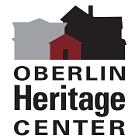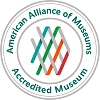Young Scholars Defend Research
Wednesday, April 6th, 2011By Donna Marie Shurr, Teacher Oberlin High School
For the eleventh year, Langston Middle School and Oberlin High School students have represented Oberlin at District 3 National History Day. On Saturday, March 19, students traveled to Case Western Reserve University to present their work before panels of judges. The 2011 contest included 400 students. This record number of entries made for a very exciting day. Students prepared original exhibits, historical papers, creative performances, media documentaries and imaginative web sites.
Representing Oberlin High School for her fifth and final year, senior Katherine Cavanaugh presented her original, individual performance entitled “ Roe vs. Wade: The Life Saving Debate .” One of Cavanaugh’s judges commented, “Your final scene was very powerful.” Freshman Julia Robinson defended her paper, “Passion: John Brown’s Raid on Harper’s Ferry” before a panel of three judges who asked scholarly questions. Sophomores Madeline Geitz and Hannah Kim dramatized a group performance entitled, “Emma Goldman.” Geitz and Kim were recognized for their research into local history by the Early Settlers of the Case Western Reserve. They received certificates and a check for their work.
In the Junior Group Division, four Langston Middle School students also submitted their projects on the theme of “Debate and Diplomacy in History.” All 8th graders wrote a research paper for English class on a National History Day topic of their choice that fit into the theme. Those who wanted to do the projects for the competition worked on them during NHD club time on Wednesdays during the 21st Century Program.
Max Annable and Schuyler Coleman presented their group documentary, American Isolationism before WWII. Ian Sweet defended his individual documentary, The Hetch Hetchy Dam Debate and Tong Li explained an individual exhibit, Nanking Massacre, the Forgotten Holocaust.
Alison Smith, eighth grade language arts teacher explains, “I am very pleased with the quality of work that all of the 8th graders produced for their research projects and I am very exited about these NHD projects. It’s exciting to see students excited about research and history and to see them take on these projects as their own. THEY chose and researched their topics so they are highly invested in the content matter. This is IB at its best- student directed and student initiated projects.”
LMS teacher Alison Smith and OHS teacher Donna Shurr are the History Day advisors for Oberlin district students. Bravo to all of the student participants for their hard work and for representing Oberlin and the Oberlin school district!










